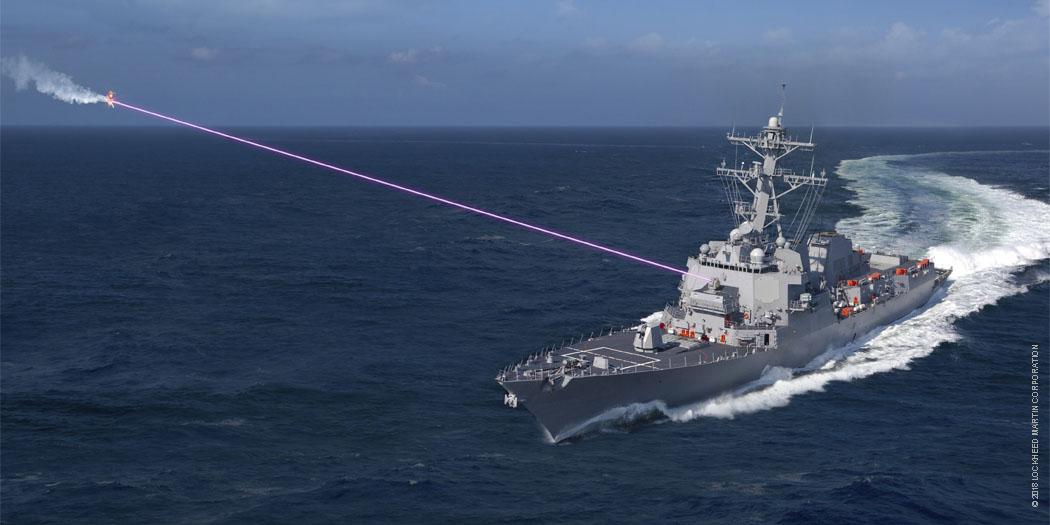High-Energy Laser Weapons Are Moving Out to Sea
The U.S. Navy’s first-of-its kind high-energy laser weapon contract will supply one 60-150 kilowatt system for an Arleigh-Burke class ship, the DDG 51 Flight IIA, and another as a land-based test unit. The award of the $150 million contract, to Lockheed Martin Corp. in late January, signals the move of laser weaponry from science and technology research to fielding and use on Naval ships. In a highly competitive field against three other companies bidding on the contract, Lockheed Martin was not able to discuss the award until now.
The weapon, which will be delivered to the Naval Sea Systems Command (NAVSEA) in April 2020, will feature varying levels of lethality. It will be used for surveillance, optical dazzling and sheer destruction. The Navy’s intent was to supply a laser weapon for a DDG 51 Flight IIA “in the shortest time frame possible,” according to a NAVSEA spokesperson.
The High Energy Laser with Integrated Optical-dazzler and Surveillance (HELIOS) system will provide key defense for the Navy against unmanned aerial vehicles and small boats, according to Rob Afzal, senior fellow, laser and senor systems at Lockheed, who spearheaded the company’s laser efforts. Lockheed Martin’s Bothell, Washington-based Aculight Corp.—which it purchased 10 years ago to deepen its laser portfolio—will design and develop the high-powered laser.
Other Lockheed Martin facilities around the country will provide additional components of the HELIOS system, including software and hardware and energy management, cooling and thermal systems, Afzal said. Lockheed Martin’s facility in Moorestown, New Jersey, which supports the Navy’s Aegis Combat System, will test HELIOS. The company is also responsible for adapting the Aegis baseline software code for the Navy to be able to command the HELIOS system, he explained. The Navy is supplying the hardware for the laser weapon’s operator interface, which will connect to Aegis.
The contract includes options worth up to $942.8 million for Lockheed Martin to provide “a full range of support” for the Navy’s extended use of HELIOS, including ship integration, training, maintenance and operational manuals, repairs, maintenance, upgrades and even additional HELIOS units. To Afzal, this is another signal that laser weaponry has graduated from the realm of research to an operational capability.
“I’ve been working on lasers for decades and we felt that the high-powered laser technology was the last piece of the puzzle, actually building and delivering a laser weapon system capability to the Department of Defense,” Afzal said. “To me the HELIOS contract is really a watershed moment, that we are crossing out of science and technology and building real capability for the Navy. It’s really rewarding for me personally.”





Comments